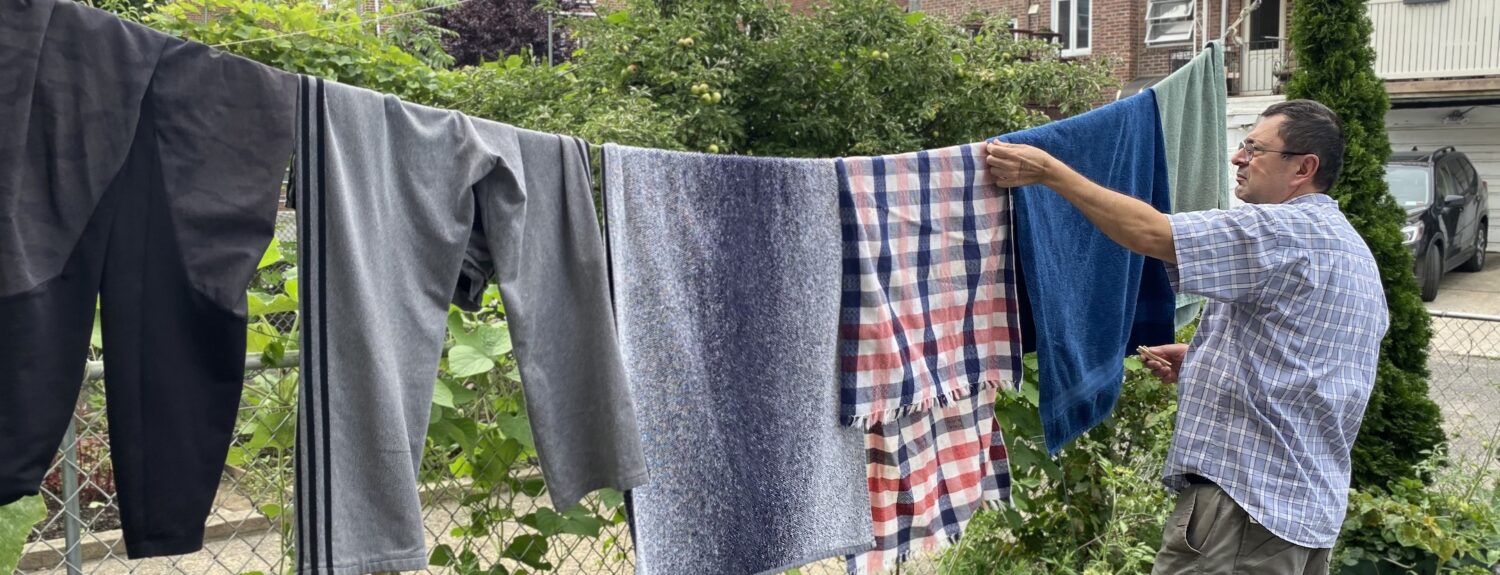Lifestyle & Culture
Clotheslines save costs, help the environment
By Shafiul Haque
For the immigrant Guventurks of Middle Village, Queens, hanging clothes out to dry is a family tradition.
“My wife is from the countryside in Ireland and they always hang the clothes outside,” said Ufuk “Fred” Guventurk, 59, a Verizon technician who lives on 81st Street. “Clotheslines have also existed in my family back when we lived in Turkey.”
A block away, on 82nd Street, Jozef Rzaca, 74, has been drying his clothes outdoors ever since he immigrated to the United States from Poland about 30 years ago.
“You know, if there is nice weather, then, it is good,” said Rzaca, a retired doorman. “In the summer season, during the winter season — any season it’s available — we like to use the clotheslines.”
“I’ve used clotheslines my whole life,” added Thomas Rzaca, 29, Jozef’s son. “I’ve used it because of my parents. They’ve used it; so, I have by default.”
Whether following tradition, saving money that they’d otherwise spend at a laundromat or helping the environment, some residents across New York City prefer clotheslines over dryers, the household appliance that proportionately consumes more electricity than any other.
That fact is what drives national Hang Dry Week, which is slated for Aug. 19 through 26 to raise awareness about clotheslines and encourage people to switch to them.
Nineteen states have “right-to-dry” laws restricting local governments from banning clotheslines, which critics describe as unsightly. In New York, where state law leaves the decision up to local governments, clothesline laws vary among municipalities. New York City allows clotheslines as long as users own their homes or get the property owner’s approval.
On Instagram, @clotheslinesnyc posts photographs of clotheslines across the five boroughs. O.ne of those photos, taken in Maspeth, Queens, shows a clothesline strung end-to-end with pants and another, strung with shorts. The lines blow in the breeze just below electric power lines. In another, taken in Bensonhurst, Brooklyn, a white-washed exterior brick wall is the backdrop for a clothesline holding white and pastel towels, white T-shirts and a baby’s pair of pants. The line is on a reel, running from a corner window of that home to a fire-escape landing.
For the environmentally conscious, air-drying laundry is the greener alternative. More than a decade ago, according to an article in The New York Times, the U.S. Energy Information Administration concluded that giving up electric dryers for one year would eliminate 1,500 pounds of ozone-damaging carbon dioxide emissions.
“It’s not only more energy-efficient but the clothes also feel fresher and cleaner,” said Guventurk, whose plastic-encased twine clotheslines stretch from the backdoor of his Queens home to the metal pole at the end of his backyard. “And I take advantage of the natural UV lights and sunlight.”
It’s not that his family doesn’t own a clothes dryer, because it does. It’s that his household prefers the age-old practice of air-drying their laundry and its benefits. He also saves $300 to $400 a year by using clotheslines, he said. “The No. 1 reason is environmental,” Guventurk added, “I try to conserve some energy and take advantage of nature. I prefer nature if it’s available versus technology, which should be used when necessary.”
“I first started using the clotheslines,” Rzaca said, “because they’re good. And my wife has liked it ever since. The clotheslines are very delicate things. It’s good, it’s good, it’s good.”


